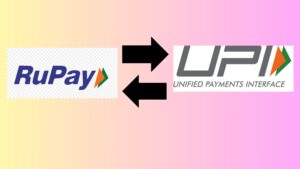A few days back, one of my friends was researching schools for her child. After looking at different educational boards (State board, CBSE, ICSE) and many schools, my friend realized that in a city like Pune, the minimum private school fee for nursery (first time admission) is Rs 70,000 annually. Now this is just pure tuition fee. The transport costs, stationary costs, uniform costs are over and above this.
In the last decade, school education costs have increased by nearly 10-12% in India annually. As per ET Online Research, the overall expenditure of schooling a child in India in a private school from age 3 to 17 years is a staggering Rs 30 lakhs. Also, the school fees are hiked every two years on an average. And bear in mind, we are still discussing only primary school education costs. We haven’t ventured into further studies after standard 12th yet!
So, if basic school education costs burn your wallet, then how can you provide for further studies or professional courses for your child? In today’s post, we will share methods to provide for school fees with relative ease. The key is to start early, preferably as soon as the child is born.
# Start with an amount in mind
The first step is to arrive at an amount which you will be able to afford for school fees. This amount needs to be derived after keeping in mind your current EMI’s, fixed outgo’s etc. The amount should be based on your present income. Let’s take the example of Keshav who has a six month baby girl. He decided to plan for his daughter’s school education and arrived at an amount of Rs 50,000 for school fees.
# Find out the average school fees in your city
The second step is to know what are the average current school fees in the city you live in. Knowing this helps to understand where you currently stand in terms of financially planning for school education. Continuing with our example, Keshav found that the average private school fee in his city is Rs 70,000.
# Method 1 – Buy a life insurance policy!
Yes! You read that right! You can invest money in life insurance policies and opt for the income option. So how it works is, you have to pay premiums for a certain number of years. After that, you receive a fixed guaranteed return of a certain amount for the term of the insurance policy. You can claim deductions when you pay premium. The returns are also tax free when you receive them. Ensure that the fixed annual income you will receive is closer to the annual school fee.
So in Keshav’s case, suppose he wants to take admission in a school where the fees are Rs 70,000 annually today. He should aim to get fixed annual income of Rs 90,000 as his daughter’s school education will begin after a few years. So lets say he buys a life insurance policy and pays premium of Rs 180,000 per year for 7 years. From the 8th year Keshav receives annual income of Rs 90,000 till the 27th year of the policy. Now, Keshav’s daughter will be around 6 years old when he starts receiving annual income. So she will be in the first grade. The income will be received for 27 years, so his daughter’s entire school fees can be financed from this annual income! Even if there is 10% inflation and the fees increase, Keshav will still have to provide for the incremental rise and not the entire amount.
# Method 2 – Invest in flexi cap mutual funds through SIP
The other way is to invest in mutual funds through SIP. We recommend putting your money in flexi-cap mutual funds which invest money in large cap, midcap and small cap companies. So lets continue with Keshav’s example. He can afford only Rs 50,000 annual school fee today and he can’t afford method 1. He puts his money through monthly SIP of Rs 4,000 in flexi-cap mutual fund right after his daughter is born. In seven years time, Keshav has already accumulated a corpus of Rs 6 lakhs and is in a very comfortable position to afford the school of his choice. He now just has to continue with the SIP until the end of his daughter’s education. He can also increase the monthly SIP amount, as and when his income increases.
In case you are financially well off, we would recommend using both the above mentioned methods. The fixed income generated from the insurance policy would fund the immediate education expense. The SIP in mutual funds would in the mean time accumulate a large corpus which can be used for higher education after standard 12th. As mentioned earlier, for both these methods to work their magic, you need to START EARLY. Begin investing soon after the birth of your child. Timely investments in the right products avoid a lot of stress in the future and make apparently impossible things achievable.



